

Nazca Lines
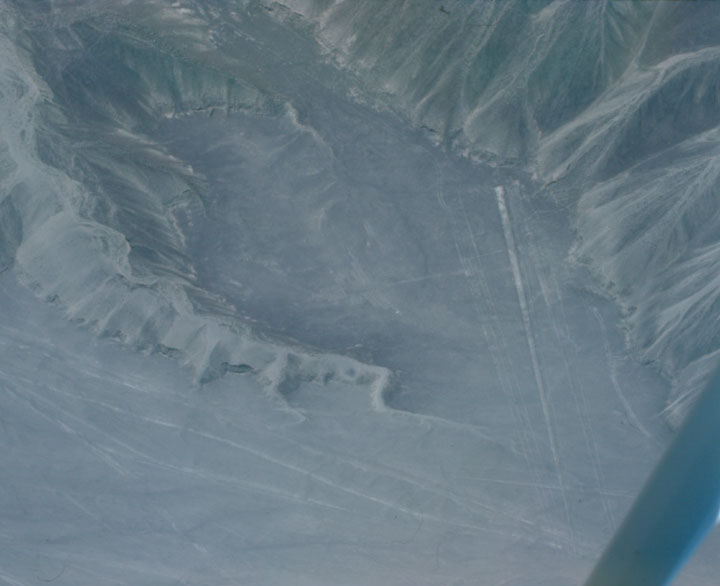
trapezoid in the valley
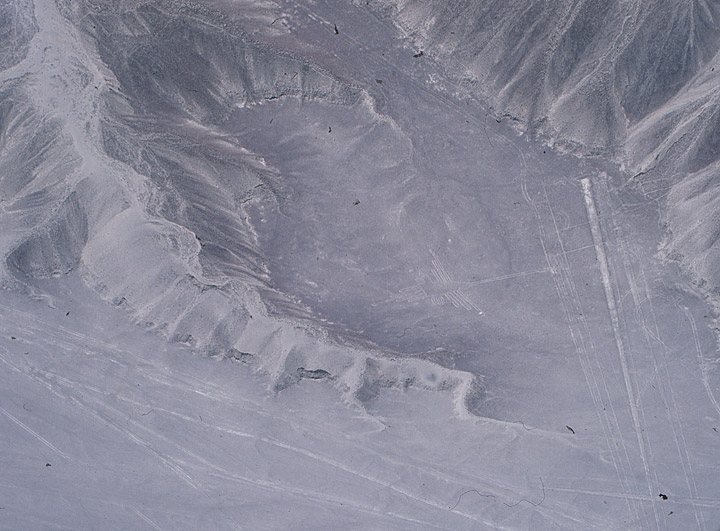
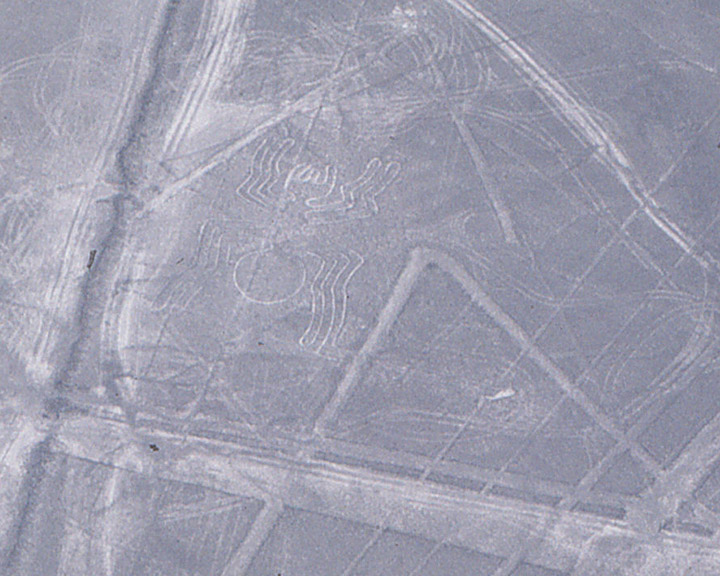
Stretching across the Nazca plains - like a giant map or blueprint left by ancient astronauts, lie the famous Nazca Lines of Peru.
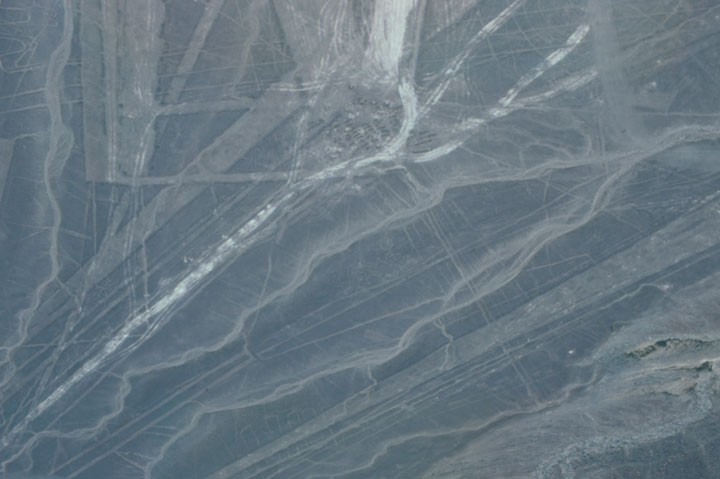
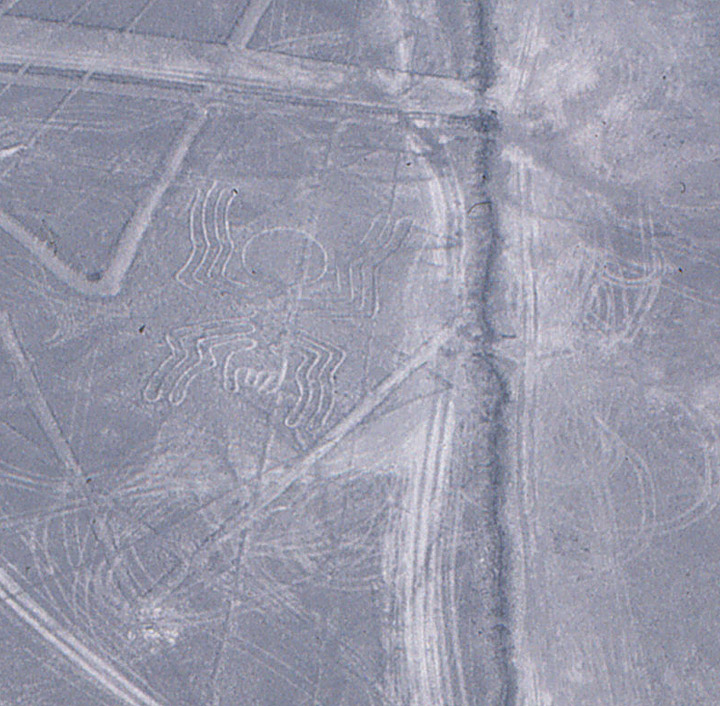
The Nazca Lines are an enigma. No one know who had built them or indeed why.
Since their discovery, the Nazca Lines have inspired fantastic explanations from
ancient gods, a landing strip for returning aliens, a celestial calendar, used
for rituals probably related to astronomy, to confirm the ayllus or clans who
made up the population and to determine through ritual their economic functions
held up by reciprocity and redistribution or, a map of underground water
supplies.
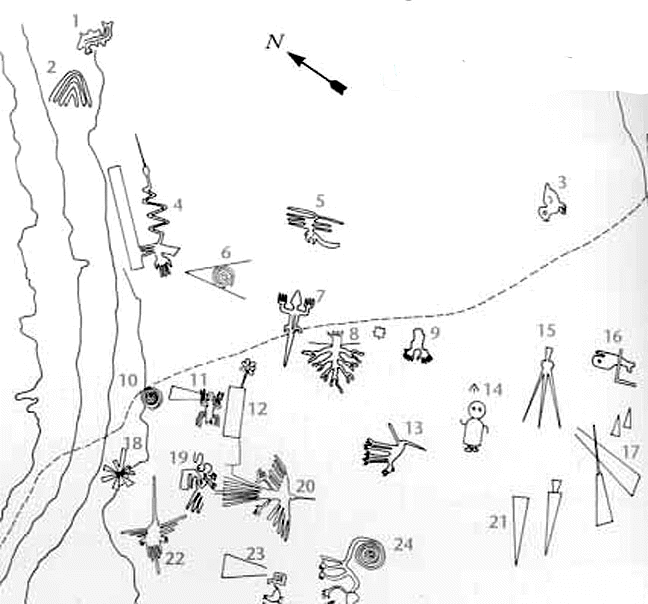
1. Killer Whale 2. Wing 3. Baby Condor
4. Bird 5. Animal 6. Spiral 7. Lizard
8. Tree 9. Hands
10. Spiral 11. Spider 12. Flower 13. Dog
14. Astronaut 15. Triangle 16. Whale 17.
Trapezoids
18. Star 19. Pelican 20. Bird 21. Trapezoid
22. Hummingbird 23. Trapezoid 24. Monkey 25.
Llama
26. Trapezoids
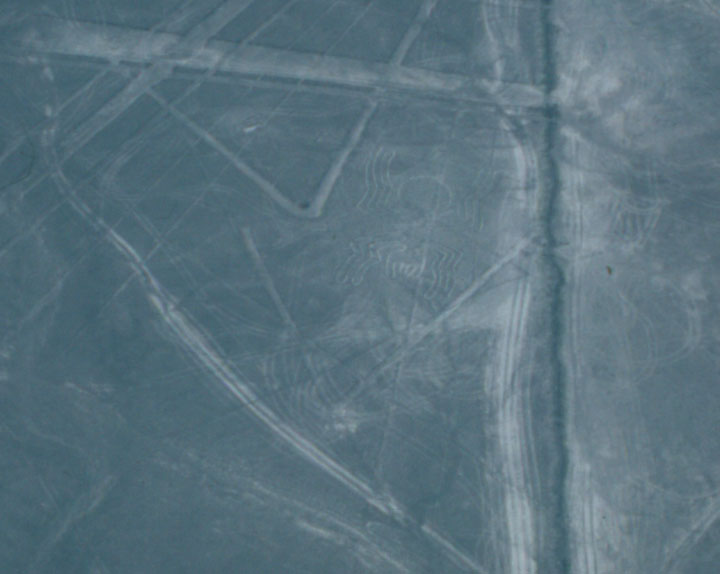
Note figures 11, 19, and 22
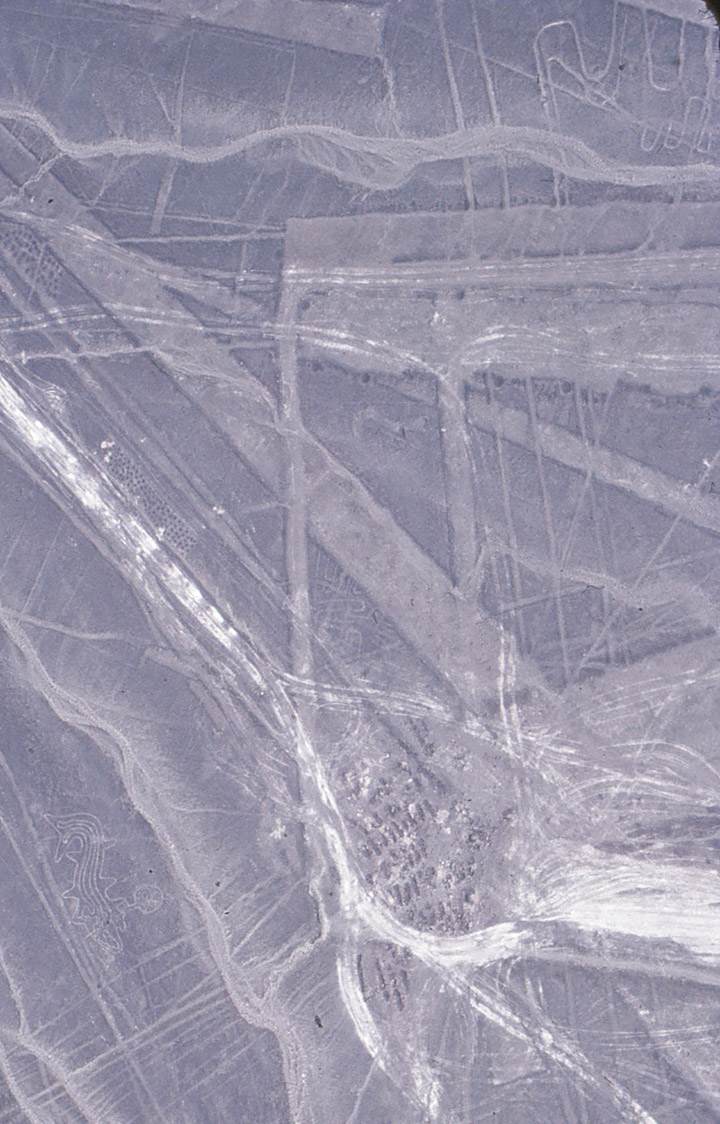
The Nazca Lines are located in the Pampa region of Peru, the desolate plain of the Peruvian coast which comprises the Pampas of San Jose (Jumana), Socos, El Ingenio and others in the province of Nasca, which is 400 Km. South of Lima, covers an area of approximately 450 km2, of sandy desert as well as the slopes of the contours of the Andes. They cover nearly 400 square miles of desert. Etched in the surface of the desert pampa sand about 300 hundred figures made of straight lines, geometric shapes most clearly visible from the air. They were supposedly built by an ancient civilization called the Nazca.
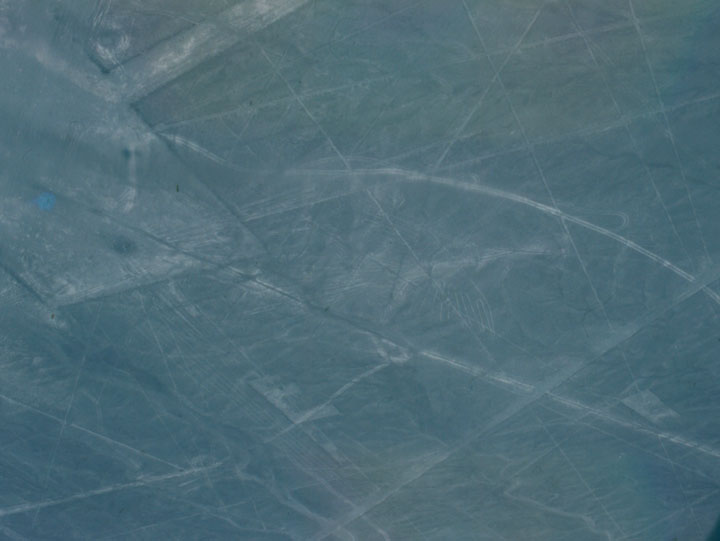
bird
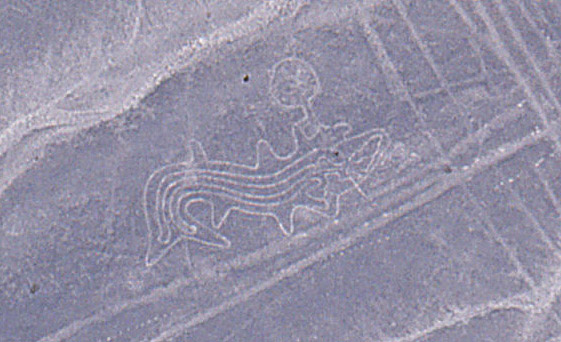
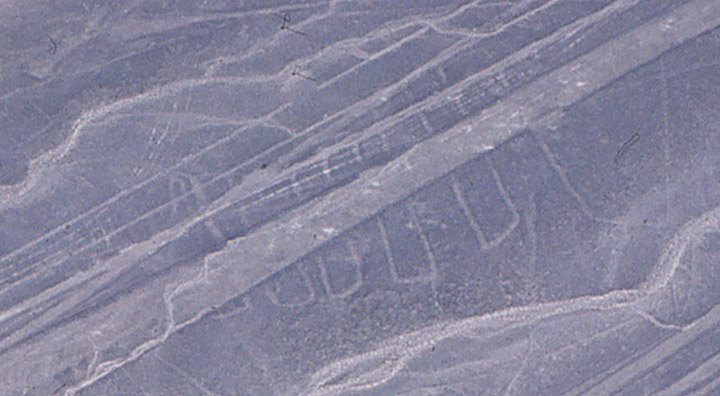
The Nazca plain is virtually unique for its ability to preserve the markings
upon it, due to the combination of the climate (one of the driest on Earth, with
only twenty minutes of rainfall per year) and the flat, stony ground which
minimises the effect of the wind at ground level. With no dust or sand to cover
the plain, and little rain or wind to erode it, lines drawn here tend to stay
drawn. These factors, combined with the existence of a lighter-coloured subsoil
beneath the desert crust, provide a vast writing pad that is ideally suited to
the artist who wants to leave his mark for eternity.
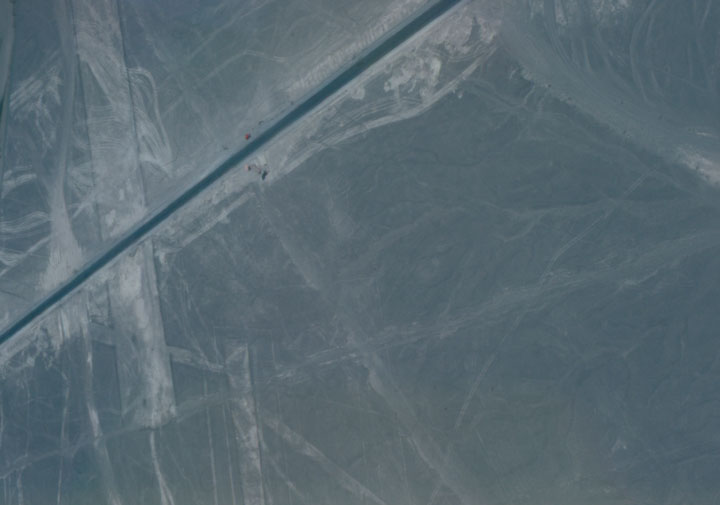
road going through the field of lines
(note the watch tower along the road to guard the site)
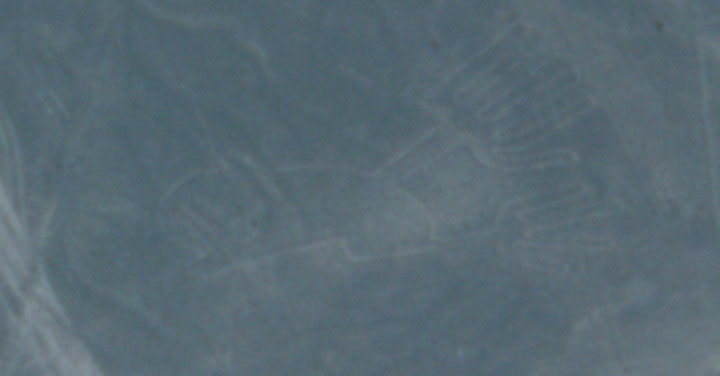
detail from above photograph
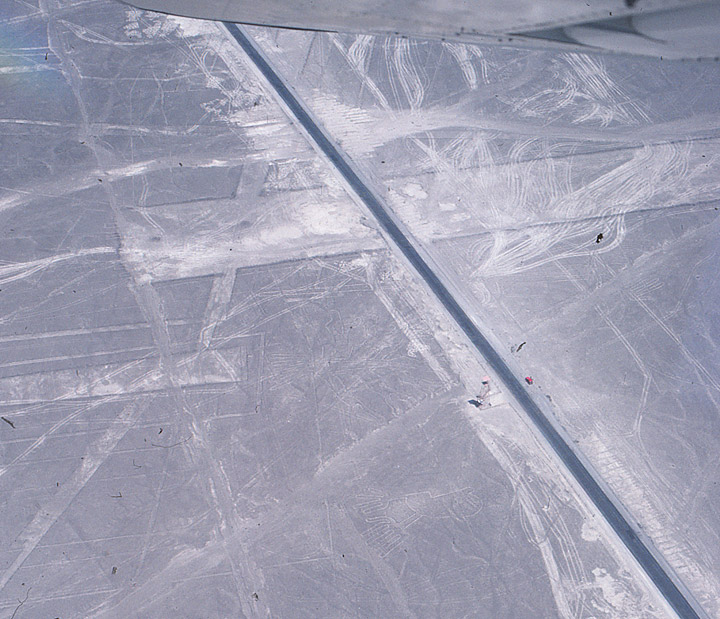
the watch tower
The pebbles which cover the surface of the desert contain ferrous oxide. The exposure of centuries has given them a dark patina. When the gravel is removed, they contrast with the color underneath. In this way the lines were drawn as furrows of a lighter color, even though in some cases they became prints. In other cases, the stones defining the lines and drawings form small lateral humps of different sizes. Some drawings, especially the early ones, were made by removing the stones and gravel from their contours and in this way the figures stood out in high relief.

overview
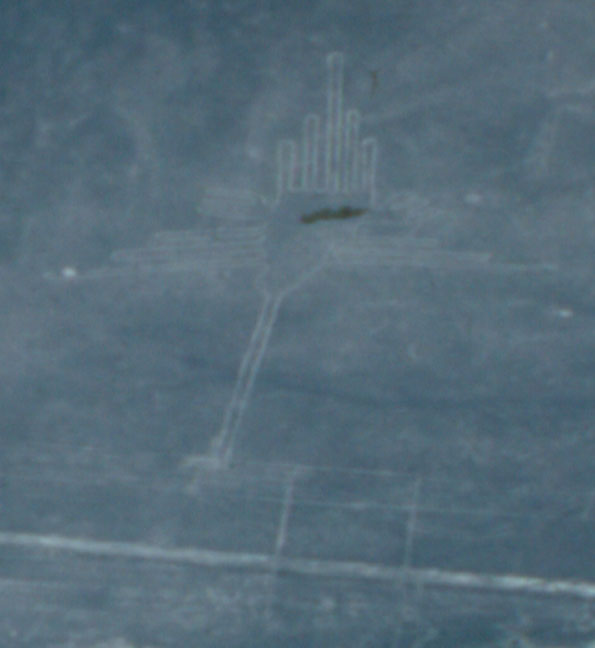
detail of a bird

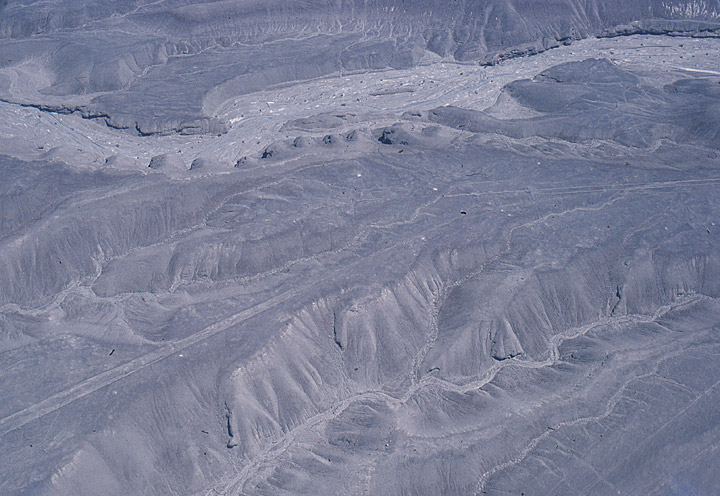
The concentration and juxtaposition of the lines and drawings leave no doubt that they required intensive long-term labor as is demonstrated by the stylistic continuity of the designs, which clearly correspond to the different stages of cultural changes.
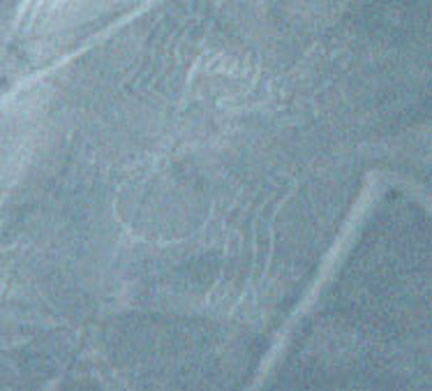
spider
Maria Reiche was the most famous Nazca Researcher. She contended that the lines should show in direction of the rising of important stars and planetary events like sun solstices. Formations like the spider and the monkey could show star constellations like Orion and Ursa Mayor.
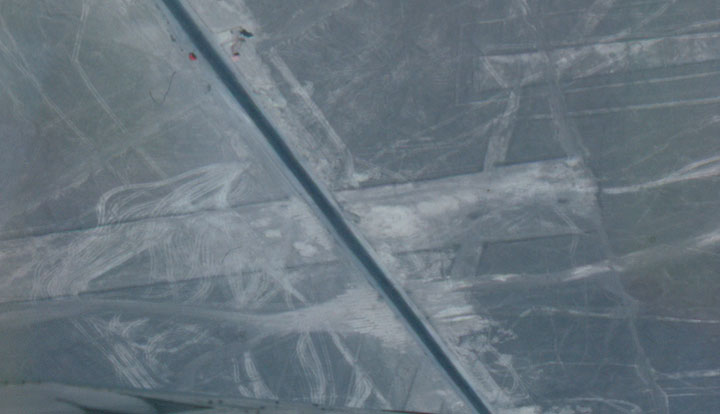
Reiche led a determined effort to discredit theories of extraterrestrial visitors. The strategy of this attack has been to argue that the Nazca Indians constructed the Lines relatively recently - some time between 300 BC and AD 800.
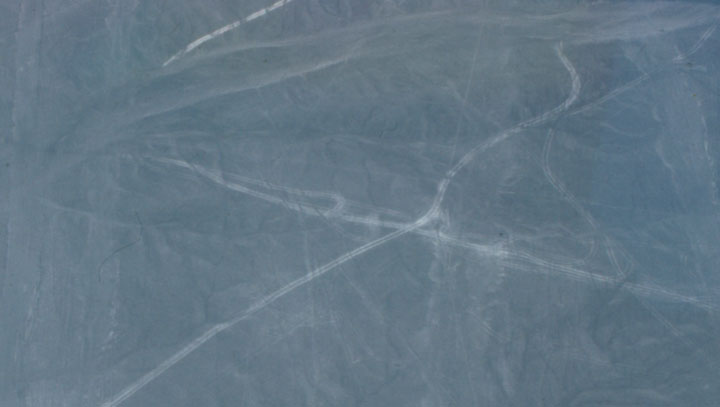
In support of this possibility, some scientists have put forward ingenious ideas
on how the geoglyphs could theoretically have been designed from the ground. The
more important evidence, however, is that which attempts to link the Lines
definitively to the Nazcan culture. Here, neither of the two key pieces of
evidence survive close scrutiny.
The first piece of evidence is a series of radiocarbon dates, based on ceramic
and wood remains which were left at the Lines by the Nazcan people. It is
claimed that this proves that the Nazcans constructed the Lines. On the
contrary, the dating of these materials tells us only that the Nazcans lived in
the area of the Nazca Lines. Since the Lines themselves cannot be radiocarbon
dated, the possibility remains that they already existed when the Nazcan culture
emerged.
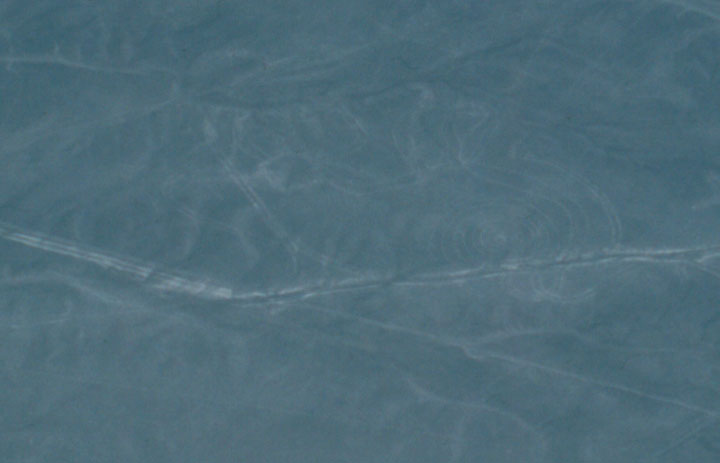
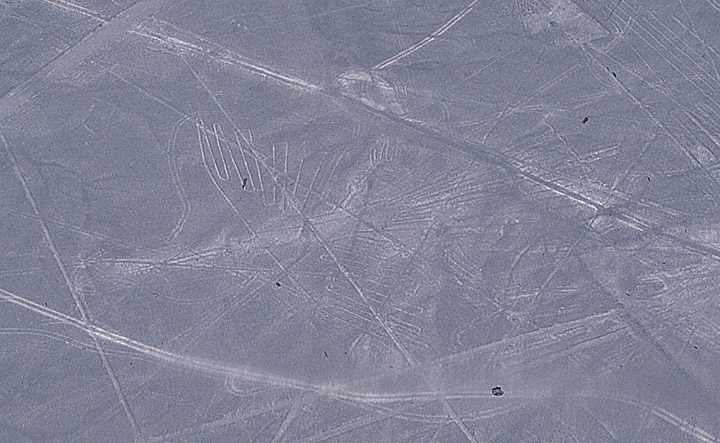

The second piece of evidence is the alleged resemblance of the Nazca geoglyphs
to certain features found on Nazcan pottery. This is an important issue because
it potentially offers proof that the Nazcans had either designed the images or
at least viewed them from the air.
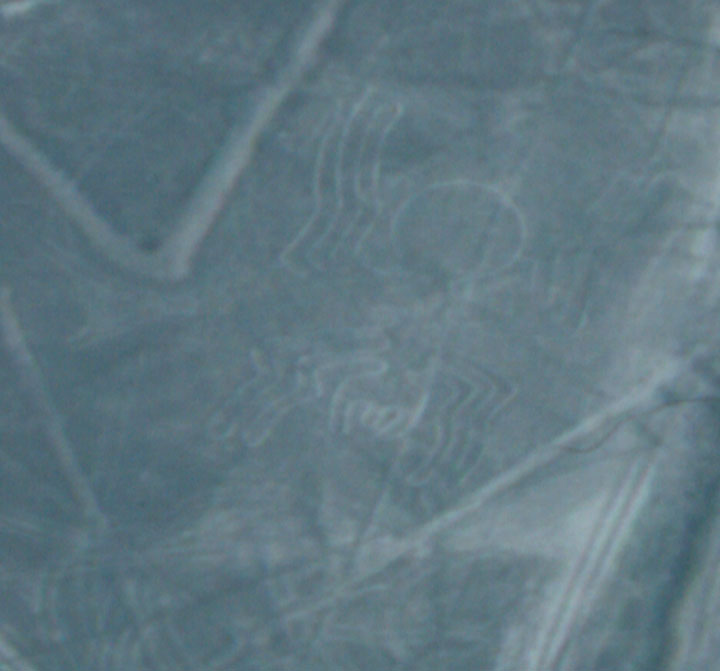
spider
Maria Reiche, the German mathematician and archaeologist most famous for her research into the enigmatic figures of Nazca, died in 1998 at the age of 95. She is buried in the arid valley she loved so well.
![]()
Note: "The Traveler" met with Maria Reiche in 1982
![]()
![]()